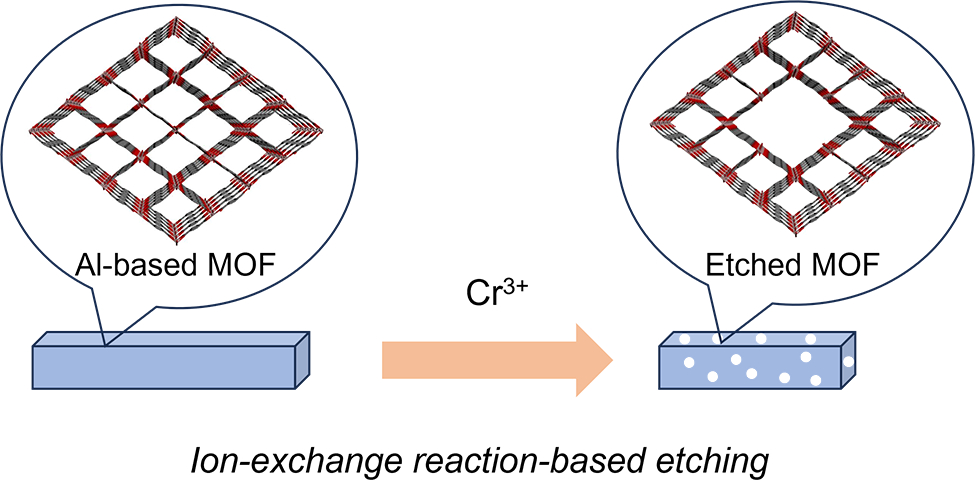Y. Takashima, N. Tanabe, S. Tanaka, T. Tsuruoka, K. Akamatsu
Cryst. Growth Des. 2024, 24, 1766-1773.
Controlling the crystal sizes and defects of metal–organic frameworks (MOFs) is crucial because they strongly affect the diffusion of guest molecules into their pores. In this study, we introduced Cr(NO3)3 as a new etching reagent to control the crystal sizes and defects of MOFs. We selected Al-based MIL-53 as the MOF, which was etched using Cr(NO3)3(aq), where ligand transfer from the MIL-53 skeleton to Cr ions occurred, followed by the release of Cr complexes and Al ions into the etching solution. From the results of the scanning electron microscopy (SEM) observations and inductively coupled plasma–X-ray photoelectron spectroscopy (ICP/XPS) measurements, we concluded that the etching process could be systematically controlled by changing the concentration of Cr(NO3)3(aq). Importantly, the amount of Cr ions embedded in the etched MIL-53 was negligible, indicating that defects could also be generated inside the pores.
